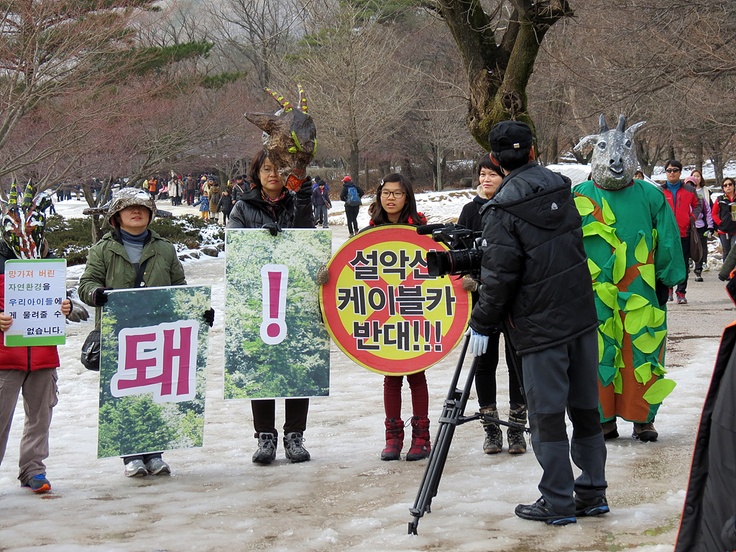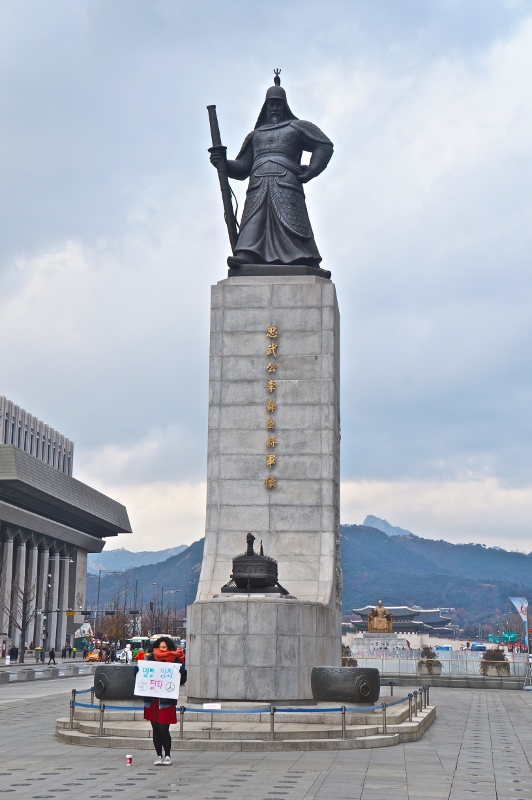Gwanghwamun was once the core of downtown Seoul. That was a long time back, when Seoul had a single, identifiable downtown — until around the mid-20th century. Today, Gwanghwamun is home to plenty of office space, a few government agencies, and has been molded into a tourist center. You’ll find museums, monuments, and the main former royal palace (Gwanghwamun is the name of south gate of the main palace). The U.S. embassy is there. The huge Kyobo bookstore is there.
The most interesting thing about Gwanghwamun, to me, though, is that by today it is a central place for South Korean malcontents to gather and hold their signs, shout their slogans, and annoy passersby. My impression is that the malcontentry has increased in the 2010s over what I recall in my first times there in 2009. The “malcontents” are of all sorts, most often in the guise of Christian religious extremists and far-left political protesters.
I got some good pictures of two particular protesters that day and can “profile” them a little:
(1) “U.S. Military, Get Out!”
The protester kept his head down. You see him and his sign at the very bottom right of the first picture. The same man and his sign are fully visible in the second picture. (The U.S. flag waves in front of the U.S. embassy across the street.) Here we go:
U.S. Military, Get Out of Our Land! We Don’t Want Your Anthrax and THAAD Missiles!
Park Geun-Hye Regime, You Can’t Control MERS! Resign Now!
자주통일과민주주의를위한 코리아연대
The Korean Solidarity Organization for Independent Unification and Democracy
I wrote above that the Gwanghwamun of the 2010s is a big tourist draw. This was a good Friday afternoon, but the place is remarkably empty. This was the several-week-window when MERS changed a lot. We see only a single pair of tourists and can count eight yellow-vested policemen. These police are all around, and in my impression much more visible than before. (The U.S. embassy is right across the street and the ambassador was slashed by a would-be assassin a few months ago.)
Stop the Seorak Mountain Cable Car!!
Here is another recent protest against the new Seorak Cable Car I find online:
Ruined Nature Cannot be Passed Down to Our Children.






